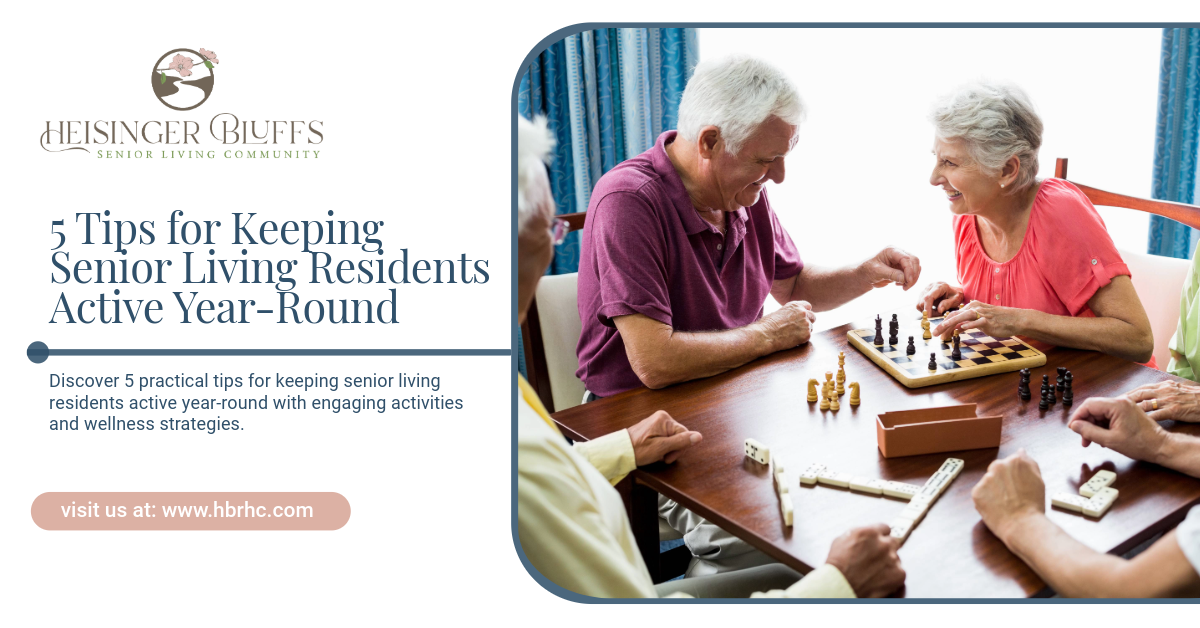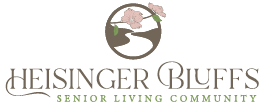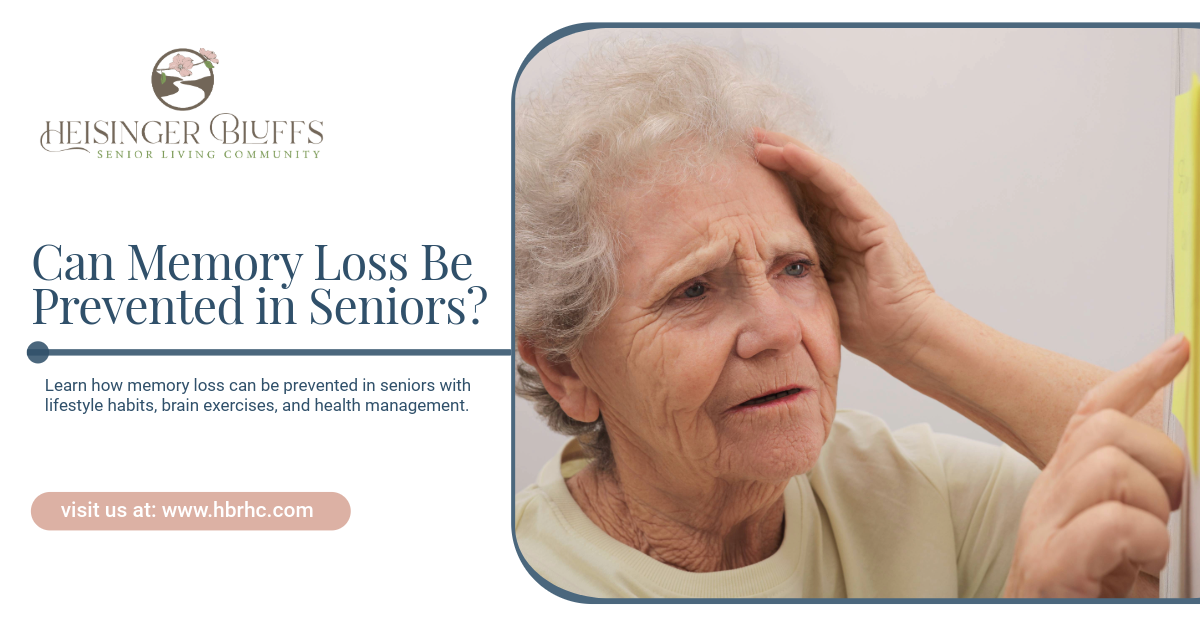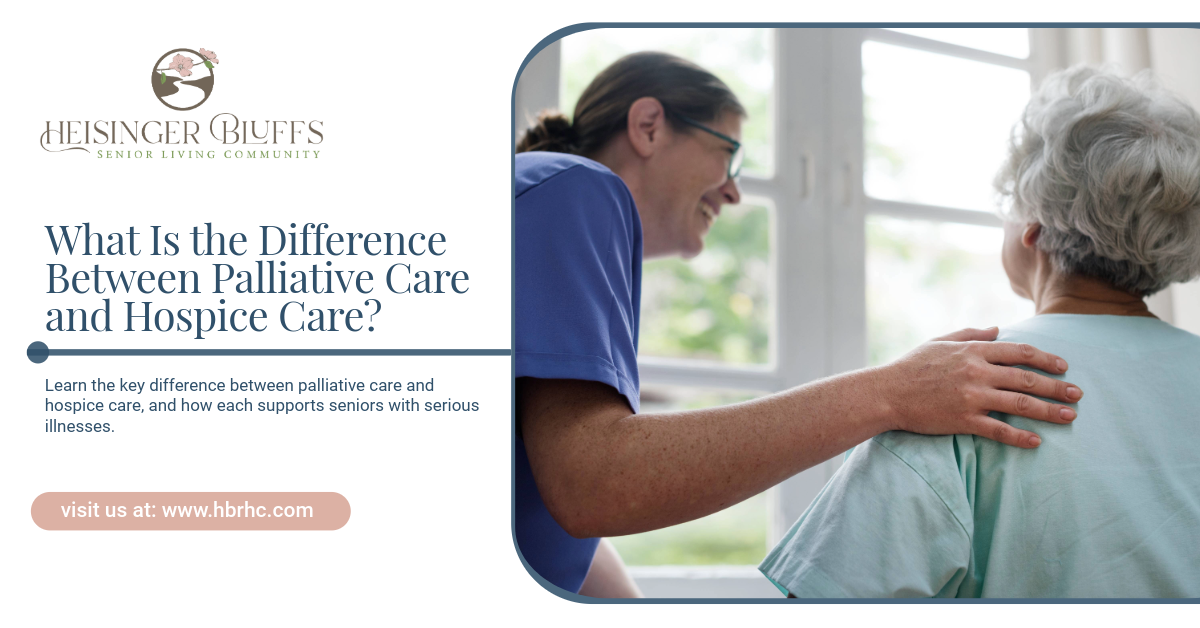5 Tips for Keeping Senior Living Residents Active Year-Round

Key Highlights
- Regular activity supports seniors’ physical health, mental sharpness, and emotional well-being.
- Seasonal planning helps maintain consistent engagement throughout the year.
- Activities should be tailored to residents’ interests, abilities, and comfort levels.
- Social interaction is a critical component of staying active and preventing isolation.
- Staff and family support enhance participation and motivation.
Staying active is essential for seniors’ physical health, mental well-being, and overall quality of life. In senior living communities, consistent engagement in physical, social, and cognitive activities promotes mobility, reduces the risk of chronic diseases, and combats loneliness or depression. However, seasonal changes and varying abilities among residents can make it challenging to maintain year-round activity.
This guide explores five practical tips for keeping senior living residents active year-round, offering a mix of physical, social, and mental activities that can be adapted for different seasons and mobility levels. These strategies ensure that residents remain engaged, energized, and connected throughout the year.
Tips for Year-Round Activities for Seniors
Tip 1: Offer a Variety of Physical Activities
Physical activity helps maintain mobility, balance, and cardiovascular health. Offering a range of exercises allows residents to choose what suits their abilities and preferences.
Indoor Activities:
- Chair yoga or stretching: Improves flexibility and reduces stiffness
- Light weightlifting: Builds muscle strength and supports bone health
- Walking groups: Use indoor hallways or safe walking areas
- Dance classes or movement to music: Adds fun while improving coordination
Outdoor Activities (Weather Permitting):
- Garden walks: Combine nature with movement
- Outdoor tai chi: Encourages balance and calm
- Croquet or lawn bowling: Promotes gentle movement and social interaction
Adaptations for Mobility Levels:
| Mobility Level | Activity Suggestions |
|---|---|
| Independent | Walking clubs, light aerobics, dance classes |
| Assisted | Chair yoga, resistance band exercises, guided walks |
| Wheelchair-bound | Seated strength training, ball toss games, guided stretching |
Including both group and individual options ensures all residents can participate comfortably.
Tip 2: Promote Cognitive and Creative Engagement
Mental stimulation is just as important as physical activity. Creative and cognitive activities keep the brain active, reduce the risk of cognitive decline, and provide a sense of accomplishment.
Year-Round Cognitive Activities:
- Puzzle clubs: Jigsaw puzzles, crosswords, or Sudoku
- Book discussions or reading circles: Encourages social interaction and critical thinking
- Board games or card games: Boost memory and strategy skills
- Trivia contests: Adds fun and competition
Creative Activities:
- Art classes: Painting, drawing, or crafts
- Music therapy: Playing instruments or singing
- Writing workshops or journaling: Encourages self-expression
These activities can be adapted to residents’ interests and abilities, ensuring that everyone can participate at their own pace.
Tip 3: Encourage Social Interaction
Staying socially active helps prevent isolation and supports emotional well-being. Seniors who maintain social connections are less likely to experience depression or cognitive decline.
Social Activities:
- Group meals: Encourage conversation and connection
- Clubs or interest groups: Gardening, knitting, or movie clubs
- Special events: Holiday parties, cultural celebrations, or birthday gatherings
- Intergenerational programs: Visits from local schools or youth groups
Staff can help by organizing regular social events and encouraging participation, especially for residents who may be shy or withdrawn.
Tip 4: Adapt Activities to the Seasons
Changing seasons offer opportunities to refresh activity calendars and keep engagement high. However, weather can also create barriers. Adapting activities to each season helps maintain consistent participation.
Seasonal Activity Ideas:
| Season | Indoor Activities | Outdoor Activities |
|---|---|---|
| Spring | Gardening in containers, spring crafts | Nature walks, planting flowers |
| Summer | Indoor exercise classes, ice cream socials | Outdoor picnics, light sports |
| Fall | Fall-themed art, baking classes | Leaf-peeping walks, pumpkin decorating |
| Winter | Chair yoga, music therapy, movie nights | Snowman building (for active residents), birdwatching |
Having both indoor and outdoor options ensures residents stay active regardless of weather conditions.
Tip 5: Involve Families and Staff
Family involvement encourages residents to stay active and adds emotional support. Staff play a crucial role in motivating residents, organizing activities, and adapting them to individual needs.
Family Involvement:
- Invite families to join group activities
- Organize family days with games and meals
- Encourage families to share residents’ interests to personalize activity plans
Staff Support:
- Train staff to recognize residents’ abilities and limitations
- Encourage staff to participate in activities alongside residents
- Monitor participation and adjust activities to maintain engagement
A supportive environment where families and staff work together fosters motivation and a sense of community.
Creating a Year-Round Activity Calendar
Developing a structured, year-round activity calendar helps maintain consistency and ensures that all residents have opportunities to stay engaged. The calendar should include:
- A mix of physical, cognitive, and social activities
- Options for various ability levels
- Seasonal themes to keep activities fresh and interesting
- Flexibility to accommodate individual preferences
At Heisinger Bluffs, we prioritize keeping residents active and engaged year-round. Our diverse activity programs are designed to support physical health, mental sharpness, and social connections, ensuring that residents enjoy a vibrant and fulfilling lifestyle in every season. Reach out today!
Frequently Asked Questions
Why is it important for senior living residents to stay active year-round?
Staying active supports physical health, mental sharpness, and emotional well-being, reducing the risk of chronic illness, cognitive decline, and depression.
What types of activities are suitable for residents with limited mobility?
Activities like chair yoga, seated strength training, ball toss games, and creative arts can be adapted for residents with limited mobility.
How can social interaction be encouraged in senior living communities?
Organizing group meals, clubs, special events, and intergenerational programs helps residents build connections and stay socially active.
How do seasonal changes affect resident activity levels?
Weather can limit outdoor activities, but adapting activities to each season with indoor alternatives ensures residents remain engaged year-round.
What role do families play in keeping residents active?
Families can motivate residents by participating in activities, sharing their interests with staff, and supporting their involvement in community programs.
Sources:
- https://www.cdc.gov/physical-activity-basics/adding-older-adults/what-counts.html
- https://www.uclahealth.org/news/article/4-worthwhile-brain-games-older-adults-3
- https://mcpress.mayoclinic.org/healthy-aging/a-surprising-key-to-healthy-aging-strong-social-connections/
- https://pmc.ncbi.nlm.nih.gov/articles/PMC9875594/
- https://www.who.int/teams/social-determinants-of-health/demographic-change-and-healthy-ageing/age-friendly-environments











